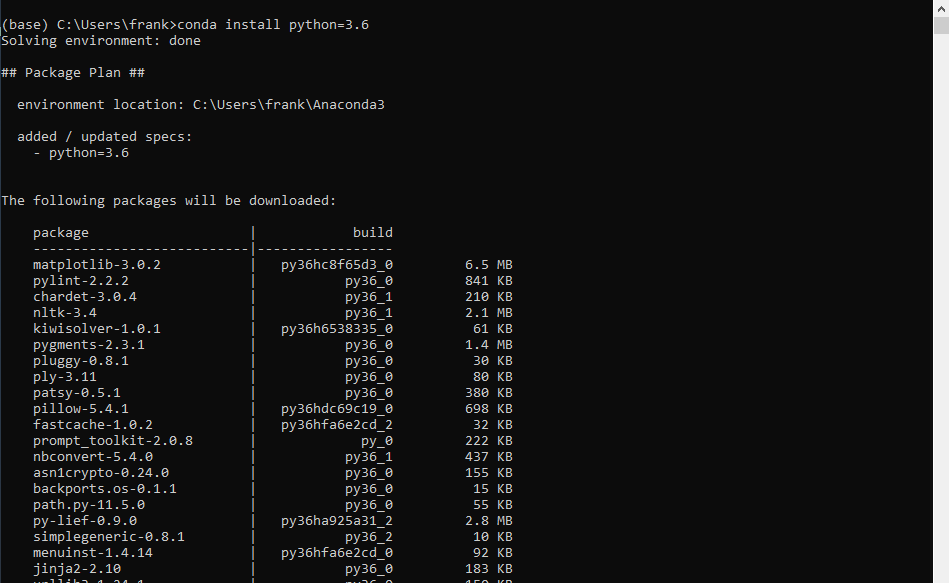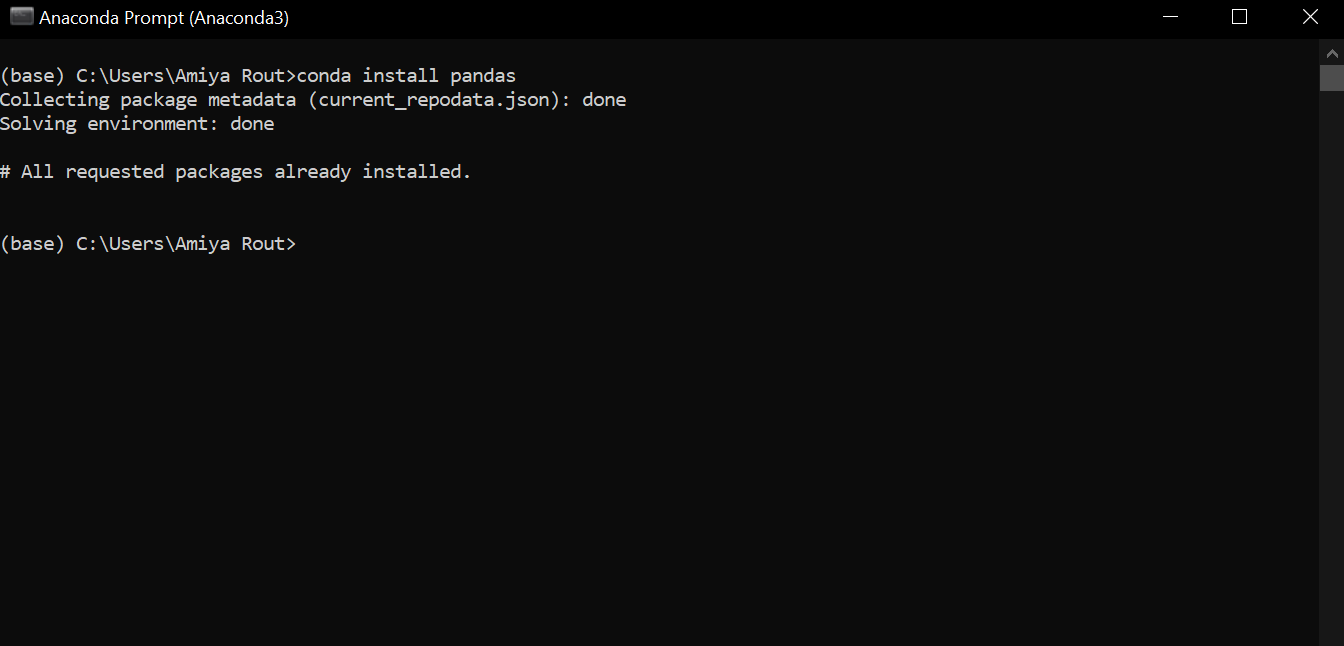
- CONDA INSTALL PACKAGE TO SPECIFIC ENVIRONMENT HOW TO
- CONDA INSTALL PACKAGE TO SPECIFIC ENVIRONMENT INSTALL
- CONDA INSTALL PACKAGE TO SPECIFIC ENVIRONMENT CODE
- CONDA INSTALL PACKAGE TO SPECIFIC ENVIRONMENT WINDOWS
If one is found, then no other interpreters are searched for or listed as pipenv expects to manage all aspects. Note: Once the "select interpreter" flow is triggered, pipenv environments for the workspace folder will be searched for.
CONDA INSTALL PACKAGE TO SPECIFIC ENVIRONMENT CODE
You can also manually specify an interpreter if Visual Studio Code does not locate it automatically. direnv folder for direnv under the workspace (project) folder. VS Code does not show conda environments that don't contain an interpreter.
CONDA INSTALL PACKAGE TO SPECIFIC ENVIRONMENT INSTALL
Standard install paths such as /usr/local/bin, /usr/sbin, /sbin, c:\\python27, c:\\python36, etc.The extension automatically looks for interpreters in the following locations:

Where the extension looks for environments This availability makes it easy to configure several distinct conda environments and then choose the appropriate one for any given project.

Unlike virtual environments, which are scoped to a project, conda environments are available globally on any given computer. Conda works well to create environments with interrelated dependencies as well as binary packages. Conda environmentsĪ conda environment is a Python environment that's managed using the conda package manager (see Getting started with conda (conda.io)). Note: While it's possible to open a virtual environment folder as a workspace, doing so is not recommended and might cause issues with using the Python extension. Be aware that if you're not using a virtual environment, and you have multiple versions of Python installed and set in the path environment variable, you might need to specify the Python interpreter to use in the terminal for installing packages to the global environment. When you then run a Python program within that environment, you know that it's running against only those specific packages. When you activate the virtual environment, any packages you install are installed only in that environment's subfolder. A virtual environment is a subfolder in a project that contains a copy of a specific interpreter. Such clutter makes it difficult to thoroughly test an application against a specific set of packages with known versions, which is exactly the kind of environment you'd set up on a build server or web server.įor this reason, developers often create a virtual environment for a project. Accordingly, any packages that you install or uninstall affect the global environment and all programs that you run within that context.Īlthough working in the global environment is an easy way to get started, that environment will, over time, become cluttered with many different packages that you've installed for different projects. For example, if you just run python (Windows) or python3 (macOS/Linux) at a new command prompt, you're running in that interpreter's global environment. Global and virtual environmentsīy default, any Python interpreter that you've installed runs in its own global environment, which is not specific to any one project. The Python tutorial () might also be helpful if you're new to the Python language. Note: If you're looking to get started with Python in Visual Studio Code, refer to the tutorial Getting Started with Python in VS Code. If you're new to working with Python environments, you can learn more at Virtual Environments and Packages () and Installing Python Modules ().
CONDA INSTALL PACKAGE TO SPECIFIC ENVIRONMENT HOW TO
While this article provides some information about Python environments and their concepts, it is primarily for understanding how to work with them within VS Code. Environment variables and environment variable definitions files (.env).

CONDA INSTALL PACKAGE TO SPECIFIC ENVIRONMENT WINDOWS
How to work with Environments and Terminal windows.How to select and activate a virtual environment.

How to create a virtual or conda environment.After you finish this article, you'll have a good understanding of: An "environment" in Python is the context in which a Python program runs and consists of an interpreter and any number of installed packages. This article discusses the helpful features provided by the VS Code Python extension for working with Python environments. Configure IntelliSense for cross-compilingĮdit Using Python environments in VS Code.


 0 kommentar(er)
0 kommentar(er)
